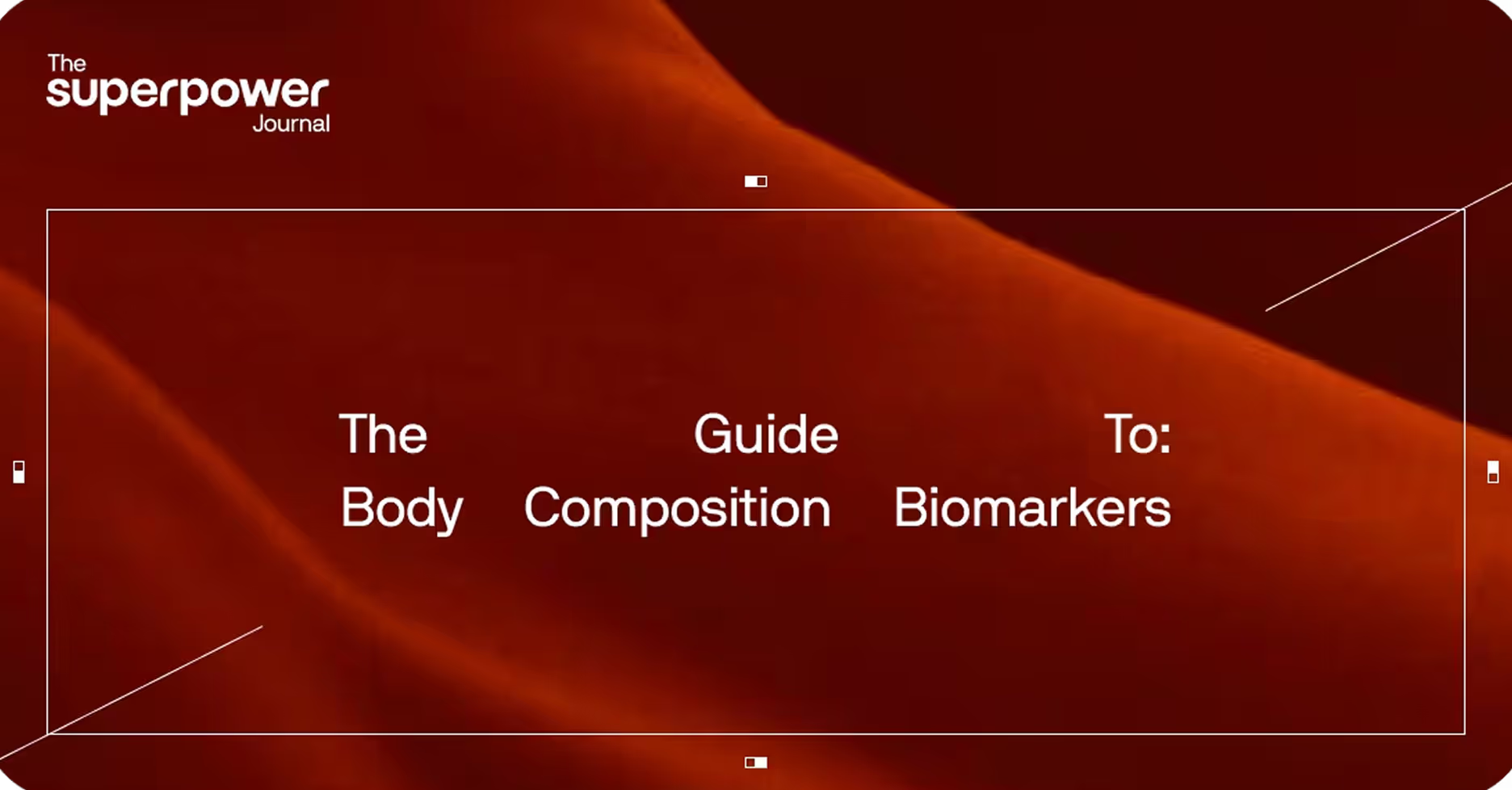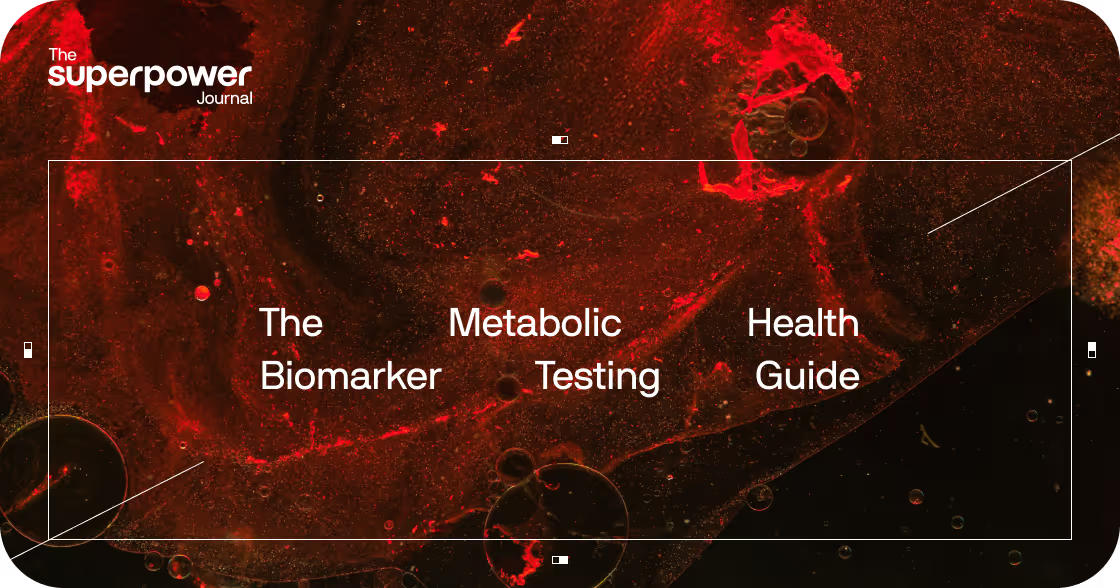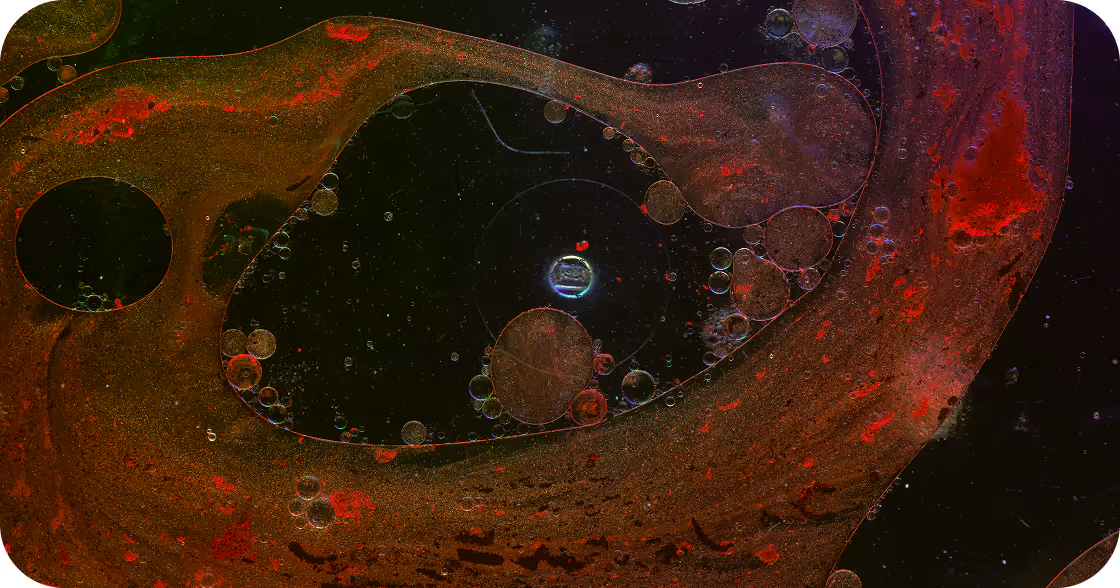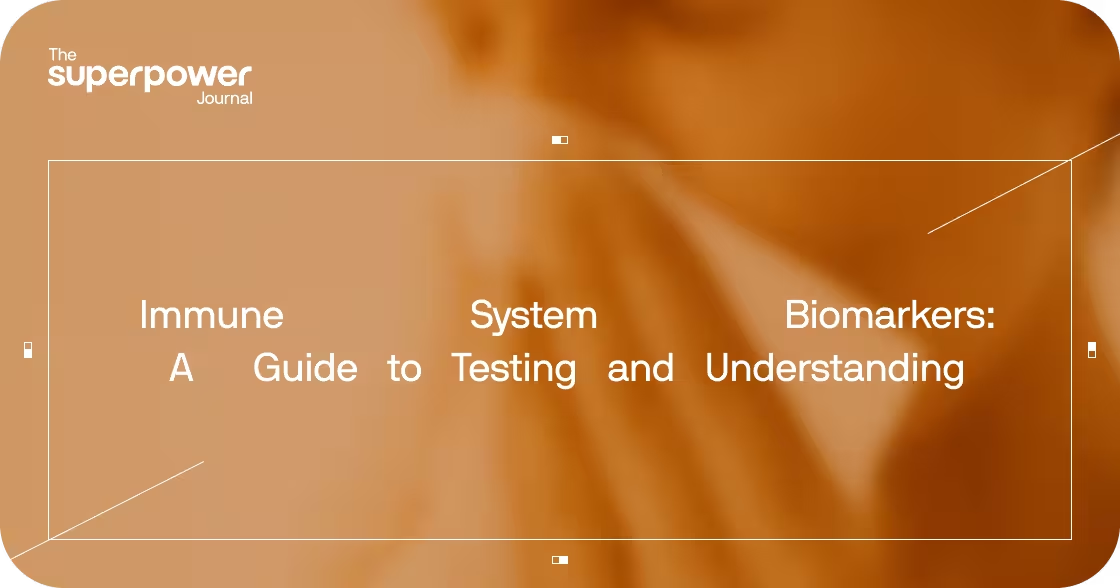The most reliable way to uncover them is through biomarker testing. This guide outlines the key metabolic biomarkers, the organ systems they reflect, what their levels reveal, and why testing is essential for preserving both lifespan and health-span.
The Organ Systems Driving Metabolic Biomarkers
Metabolic biomarkers are measurable signals of how your body processes, stores, and uses energy ². They do not act in isolation; each major organ contributes to the network:
- Pancreas ↔ Liver: The pancreas releases insulin to tell the liver when to store or release glucose. When the liver becomes insulin resistant, it oversupplies glucose, forcing the pancreas to release more insulin — a cycle reflected in elevated fasting insulin and glucose.
- Skeletal muscle: The primary glucose sink. As sensitivity declines, the pancreas compensates with higher insulin output and the liver shifts toward fat storage. Loss of muscle mass (sarcopenia) further weakens this pathway, amplifying stress on both systems.
- Kidneys: Excrete uric acid and regulate electrolytes that shape vascular tone and calcium balance. Elevated uric acid often parallels insulin resistance, linking renal clearance to systemic oxidative stress.
- Vascular system: Distributes glucose, lipids, and hormones across tissues. Endothelial dysfunction — accelerated by high glucose and HbA1c — reduces nutrient delivery and increases inflammation, feeding back into organ stress.
When these feedback loops are disrupted, biomarkers drift outside functional optimal ranges — often years before overt disease develops ³.
What the Key Biomarkers Are
Biomarker Ranges: Normal vs. Optimal
"Normal" ranges reflect population averages, not ideal health. With so much silent dysfunction in the population, normal does not mean safe. Optimal ranges reflect the window where resilience and energy are highest ¹¹.
What Imbalances Mean
High glucose or HbA1c indicates chronic sugar overload ¹². Elevated insulin reveals pancreatic strain and insulin resistance ¹³. An elevated TyG Index uncovers insulin resistance even when glucose looks normal ¹⁴. Elevated uric acid signals oxidative stress ¹⁵. Abnormal calcium may impair muscle, nerve, or cellular signaling ¹⁶.
These deviations can persist for years before a diagnosis. The key is recognizing that "normal" is often not enough.
Biomarkers and Longevity
Longevity is more than just adding years. It is extending health-span, the number of years lived with strength, clarity, and independence ¹⁷.
High glucose and HbA1c accelerate vascular aging through glycation, which stiffens vessels and damages collagen ¹⁸. Insulin resistance sustains hyperinsulinemia (high insulin), increases mTOR activity — the growth pathway that drives cell building — and suppresses autophagy, the cell-cleaning process that removes damaged proteins ¹⁹.
Excess uric acid increases oxidative stress and activates the NLRP3 inflammasome, the innate immune sensor that drives inflammation, damaging mitochondria and vessels ²⁰. Calcium imbalance disrupts nerve signaling, muscle contraction, and intracellular communication.
Keeping biomarkers within optimal ranges signals efficient metabolic, vascular, and mitochondrial function, maintaining energy production, vascular flexibility, and cellular repair — the mechanisms that extend both lifespan and health-span ²¹.
How to Optimize Biomarker Levels
1. Nutrition
Focus on glycemic load, not just carb quantity. Pairing starches with protein or fat blunts glucose spikes, lowering HbA1c and insulin demand. Time-restricted eating can reduce fasting insulin and improve mitochondrial efficiency, even without weight loss.
2. Exercise
Skeletal muscle contraction moves glucose into cells independent of insulin. This makes post-meal activity - even a 10-minute walk - disproportionately effective at lowering glucose and insulin burden.
Reducing visceral fat decreases inflammatory cytokines (TNF-α, IL-6) that drive insulin resistance. Even modest loss improves TyG and fasting insulin, often before changes in BMI.
3. Sleep
Deep sleep phases regulate growth hormone and cortisol rhythms. Fragmented sleep increases morning glucose and insulin resistance. Just one night of deprivation can mimic prediabetes ²⁵.
4. Hydration and Electrolytes
Adequate hydration lowers serum uric acid by enhancing renal clearance. Adding vitamin C can improve uric acid excretion and may further reduce crystallization risk, lowering joint and vascular stress ²⁶.
5. Micronutrient balance
Magnesium, vitamin D, and omega-3s improve insulin receptor signaling and muscle glucose uptake; deficiencies correlate with higher HbA1c and fasting insulin. These nutrients act within networks: vitamin D requires magnesium and vitamin K2 for activation, and magnesium itself depends on adequate B-vitamin status. Supplementing in isolation can shift pathways without restoring balance; assessment of the whole system is essential.
6. Postprandial monitoring
Glucose excursions after meals often reveal dysfunction earlier than fasting values. Tracking post-meal glucose can guide dietary adjustments more effectively than focusing on fasting alone.
Why Testing Is Critical
Metabolic dysfunction develops silently; you cannot feel insulin resistance or early HbA1c elevation ²⁷. By the time symptoms emerge, vascular and cellular damage is often well underway. Metabolic biomarker testing reveals these shifts years before diagnosis, making it a cornerstone of prevention.
Testing is especially important for:
- Adults over 40, when skeletal muscle loss (sarcopenia) reduces the body’s largest glucose sink and, together with declining mitochondrial efficiency and hormonal shifts, lowers metabolic resilience.
- Individuals with a family history of diabetes, cardiovascular disease, or obesity-related disorders.
- Those with subtle symptoms — fatigue, sugar cravings, increased thirst, weight changes, slow wound healing, or afternoon energy crashes — which often precede overt disease.
- Athletes, where small imbalances in glucose, insulin, or uric acid can affect recovery, adaptation, and performance.
A single panel establishes a baseline, while repeat testing tracks the trajectory of change and measures whether interventions are restoring optimal function ²⁸.
Silent Progression in Research
In clinical datasets, I've seen countless examples of people who maintained "normal" glucose while their insulin or TyG scores steadily rose ³³. Years later, they were diagnosed with diabetes or fatty liver disease. Many expressed the same thought: "But I felt fine." This is why biomarker testing is not optional for prevention — it's essential.
Do you often experience an afternoon slump where focus disappears and cravings take over? That could be your biomarkers hinting at early imbalance.
Researcher’s Note: How Metabolic Biomarkers Progress
Longitudinal studies consistently show that dysmetabolism advances through compensated phases that fasting glucose alone fails to detect. We can classify these into three recurring patterns:
- Compensated insulin resistance: Glucose remains “normal” while fasting insulin, TyG, or HOMA-IR steadily rise. Muscle uptake declines first; the pancreas compensates with hyperinsulinemia, and by the time glucose drifts upward, β-cell reserve is already eroded.
- Postprandial dysglycemia: Blood sugar and triglycerides after meals worsen years before fasting measures change. Early loss of insulin response and liver resistance drive higher post-meal peaks, which eventually raise HbA1c.
- Hepatic-lipid-uric axis: Triglycerides, TyG, and uric acid often rise in parallel, reflecting hepatic insulin resistance, de novo lipogenesis, and oxidative stress. This pattern predicts fatty liver and cardiometabolic disease even when fasting glucose appears “normal”.
Key Insight: Trajectory matters more than a single value! Converging upward trends in insulin, TyG, triglycerides, HbA1c, and uric acid — especially with declining HDL-C — identify high-risk progression phenotypes.
How Superpower Can Help With Metabolic Health Biomarker Testing
Single values are insufficient. True prevention requires both a baseline and tracking over time. Early markers, such as fasting insulin, TyG, triglycerides/HDL-C, postprandial glucose, and uric acid, reveal hidden stress in the system long before fasting glucose or HbA1c cross clinical cutoffs.
At Superpower, we provide a comprehensive panel of 100+ biomarkers that include all key metabolic markers. This allows you to establish your baseline, detect subtle shifts, and track whether interventions are restoring optimal function. Biomarker testing moves you beyond “normal” into true resilience, extending not just lifespan, but health-span.
Ready to test your biomarkers? Join Superpower today to access advanced biomarker testing with over 100 lab tests.
- Araújo J, Cai J, Stevens J. Prevalence of Optimal Metabolic Health in American Adults: National Health and Nutrition Examination Survey 2009-2016. Metab Syndr Relat Disord. 2019;17(1):46-52.
- Hirode G, Wong RJ. Trends in the Prevalence of Metabolic Syndrome in the United States, 2011-2016. JAMA. 2020;323(24):2526-2528.
- Ford ES, Giles WH, Dietz WH. Prevalence of the metabolic syndrome among US adults: findings from the third National Health and Nutrition Examination Survey. JAMA. 2002;287(3):356-9.
- American Diabetes Association. Understanding A1C Test. Diabetes Care. 2023;46(Supplement_1):S19-S40.
- Nathan DM, Kuenen J, Borg R, et al. Translating the A1C assay into estimated average glucose values. Diabetes Care. 2008;31(8):1473-8.
- Superpower. Optimal Fasting Insulin. 2024. Available at: https://superpower.com/editorial/optimal-fasting-insulin
- Guerrero-Romero F, Simental-Mendía LE, González-Ortiz M, et al. The product of triglycerides and glucose, a simple measure of insulin sensitivity. Comparison with the euglycemic-hyperinsulinemic clamp. J Clin Endocrinol Metab. 2010;95(7):3347-51.
- Er LK, Wu S, Chou HH, et al. Triglyceride Glucose-Body Mass Index Is a Simple and Clinically Useful Surrogate Marker for Insulin Resistance in Nondiabetic Individuals. PLoS One. 2016;11(3):e0149731.
- Maiuolo J, Oppedisano F, Gratteri S, et al. Regulation of uric acid metabolism and excretion. Int J Cardiol. 2016;213:8-14.
- Clase CM, Norman GL, Beecroft ML, et al. Albumin-corrected calcium and ionized calcium in stable haemodialysis patients. Nephrol Dial Transplant. 2000;15(11):1841-6.
- Siphox Health. What's the difference between normal and optimal blood ranges? 2024. Available at: https://siphoxhealth.com/articles/whats-the-difference-between-normal-and-optimal-blood-ranges
- Diabetes Control and Complications Trial Research Group. The effect of intensive treatment of diabetes on the development and progression of long-term complications in insulin-dependent diabetes mellitus. N Engl J Med. 1993;329(14):977-86.
- Reaven GM. Banting lecture 1988. Role of insulin resistance in human disease. Diabetes. 1988;37(12):1595-607.
- Simental-Mendía LE, Rodríguez-Morán M, Guerrero-Romero F. The product of fasting glucose and triglycerides as surrogate for identifying insulin resistance in apparently healthy subjects. Metab Syndr Relat Disord. 2008;6(4):299-304.
- Feig DI, Kang DH, Johnson RJ. Uric acid and cardiovascular risk. N Engl J Med. 2008;359(17):1811-21.
- Reid IR, Bolland MJ, Grey A. Effects of vitamin D supplements on bone mineral density: a systematic review and meta-analysis. Lancet. 2014;383(9912):146-55.
- Crimmins EM. Lifespan and Healthspan: Past, Present, and Promise. Gerontologist. 2015;55(6):901-11.
- Stratton IM, Adler AI, Neil HA, et al. Association of glycaemia with macrovascular and microvascular complications of type 2 diabetes (UKPDS 35): prospective observational study. BMJ. 2000;321(7258):405-12.
- Laakso M, Kuusisto J. Insulin resistance and hyperglycaemia in cardiovascular disease development. Nat Rev Endocrinol. 2014;10(5):293-302.
- Kang DH, Park SK, Lee IK, Johnson RJ. Uric acid-induced C-reactive protein expression: implication on cell proliferation and nitric oxide production of human vascular cells. J Am Soc Nephrol. 2005;16(12):3553-62.
- López-Otín C, Blasco MA, Partridge L, et al. The hallmarks of aging. Cell. 2013;153(6):1194-217.
- Evert AB, Dennison M, Gardner CD, et al. Nutrition Therapy for Adults With Diabetes or Prediabetes: A Consensus Report. Diabetes Care. 2019;42(5):731-754.
- Colberg SR, Sigal RJ, Yardley JE, et al. Physical Activity/Exercise and Diabetes: A Position Statement of the American Diabetes Association. Diabetes Care. 2016;39(11):2065-2079.
- Wing RR, Lang W, Wadden TA, et al. Benefits of modest weight loss in improving cardiovascular risk factors in overweight and obese individuals with type 2 diabetes. Diabetes Care. 2011;34(7):1481-6.
- Spiegel K, Leproult R, Van Cauter E. Impact of sleep debt on metabolic and endocrine function. Lancet. 1999;354(9188):1435-9.
- Choi HK, Curhan G. Beer, liquor, and wine consumption and serum uric acid level: the Third National Health and Nutrition Examination Survey. Arthritis Rheum. 2004;51(6):1023-9.
- Abdul-Ghani MA, Tripathy D, DeFronzo RA. Contributions of beta-cell dysfunction and insulin resistance to the pathogenesis of impaired glucose tolerance and impaired fasting glucose. Diabetes Care. 2006;29(5):1130-9.
- American Diabetes Association. Standards of Medical Care in Diabetes-2023. Diabetes Care. 2023;46(Suppl 1):S1-S291.
- Brownlee M. The pathobiology of diabetic complications: a unifying mechanism. Diabetes. 2005;54(6):1615-25.
- Czech MP. Insulin action and resistance in obesity and type 2 diabetes. Nat Med. 2017;23(7):804-814.
- Dalbeth N, Merriman TR, Stamp LK. Gout. Lancet. 2016;388(10055):2039-2052.
- Peacock M. Calcium metabolism in health and disease. Clin J Am Soc Nephrol. 2010;5 Suppl 1:S23-30.
- Abdul-Ghani MA, Williams K, DeFronzo RA, Stern M. What is the best predictor of future type 2 diabetes? Diabetes Care. 2007;30(6):1544-8.
Kramer CK, Zinman B, Retnakaran R. Are metabolically healthy overweight and obesity benign conditions?: A systematic review and meta-analysis. Ann Intern Med. 2013;159(11):758-69.




.avif)
.png)






.svg)


